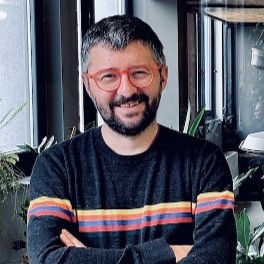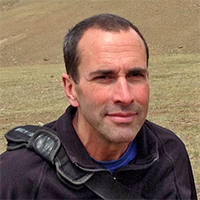
Shooting the Set – a course offered this summer by York University’s School of the Arts, Media, Performance & Design (AMPD) – gave students a fast-paced, experiential opportunity to gain a wide range of filmmaking skills, thanks to the interdisciplinary collaboration between AMPD, the York University Motion Media Studio and York International.
“Why is this class not mandatory?”

That’s what Boris Licina, a fourth-year screenwriting student, has been pondering ever since he enthusiastically completed the Shooting the Set course this summer. “Everyone should have the chance to experience this,” he says.
The six-week intensive course brings together 30 York students – both graduate and undergraduate – from five departments across AMPD to collaborate and produce six original films. Each student is trained in at least two filmmaking skills: directing and assistant directing, props/costumes, screenwriting, sound recording and editing, camera and lighting, or lead and supporting acting roles. The course aims to provide each student with a hands-on opportunity that gives them actual skills and credits for their professional resumes.
In the course, students are divided into groups of 10, taking turns playing different roles. They can act, write, direct, shoot or perform other duties to produce two movies per group – six in total. Associate Professor John Greyson, who taught the course, notes that the miracle of each student having the chance to work on at least two 10-minute movies in six weeks is part of what makes the course so powerful.

“Coming up with a new script, then next week we’re shooting it and then the week after that we’re watching a rough cut? That sort of intensity is usually stretched out over the entire course of a year,” says Greyson, “but this is trying to give people professional film studio experience, where they’re jumping through hoops and making decisions in the moment and finding creative solutions.”
Greyson says he encourages students to tell small stories of everyday life that some people may dismiss as not worthy of screen time. Stories like a new immigrant having anxiety about taking their driver’s test and facing the problem of needing a ride to an out-of-town test site. “Those sorts of stories speak to something about the world we live in,” he says.
That story, as it happens, is Licina’s, and is one of the movies he worked on. He pitched the idea based on the lengthy efforts it took to find a ride to his own driver’s test. He served as writer and art director on the film, called Objects in the Mirror are Closer Than They Appear.
“With my G1 licence, I can’t drive alone on the highway, so I needed someone to drive with me,” he says. “My test was at 9:30 a.m. on a Monday, and everybody was working and not everyone in my class drives. So, this movie is about newcomers that come to Canada to live by the rules and have a good life, but now they need to break a rule in order to have that good life.”
The course was taught at the York University Motion Media Studio (YUMMS) at Cinespace, a massive film studio in Etobicoke, Ont.
“YUMMS is at the nexus of higher education and industry,” says Ingrid Veninger, an associate professor in the Cinema & Media Arts Department and the director of YUMMS, “and it’s fantastic to watch students light up when they arrive at the gates of Cinespace because they know they are entering a whole world of opportunity.”
That was likely never clearer for Shooting the Set students when, during the course, award-winning director Guillermo del Toro was making a new Frankenstein movie down the hall, Hollywood actors Arnold Schwarzenegger and Alexander Skarsgård were sighted, and the cast and crew of television shows “The Umbrella Academy” and “The Handmaid’s Tale” were busy at work nearby.
Because Shooting the Set was a summer intensive, Veninger and Greyson knew that could have a cost for students in terms of travel, life expenses and missing out on summer jobs. They turned to Co-operative Education & Work-Integrated Learning Canada – an organization that partners with academic institutions to support experiential education to better prepare students for the work world – and applied for a grant to give the students a stipend.
Because international students are not eligible for these grants, York International (YI) also joined the interdisciplinary effort by offering stipends for the course’s international students. Woo Kim, YI’s director of international student and scholar services, explained it was to make sure students from across the world, who make many sacrifices in leaving their home countries to study abroad, are able to benefit from valuable experiential educational opportunities.
“We really just saw this as an opportunity for York to really live up to our values around decolonization, equity, diversity and inclusion, access to education and educational opportunities,” says Kim.
It worked. Licina, who moved his young family to Canada from Croatia to study at York, used the stipend, which he felt put him on an equal footing with other students. “I’m really grateful for that,” he says, “not only because of the money but because we feel like we are equal.”
That is music to Greyson’s ears.
“The students were given this amazing gift of being able to work for six weeks on a professional sound stage – this is six weeks of learning how to collaborate with people, how to problem solve, how to confront disagreements and find collective solutions, ” he says, “because these are the real-world skills we all need on set.”
With files from Julie Carl
